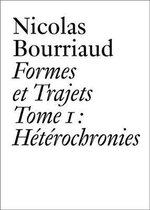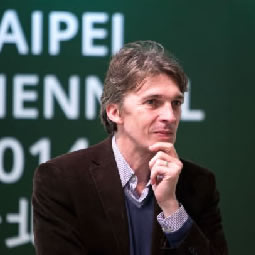
Or shouldn’t they? We have to get out of this dialectical loop between the global and the local, to get rid of the binary opposition between globalization and traditions. Let’s face it: artists now have access to information, and they all use the same toolbox, from Stockholm to Bangkok. I think that this theoretical resistance, which consists in sticking to the multiculturalist dogma, is hiding a paternalist pattern : it jails the individuals into their so-called ‘origins’ and their ‘identities’. Saying that it is the privilege of the artistic jet set is a pure denial of the worldwide violence of the capitalist system, or an extreme naiveness. For him, this ‘globalised state of culture’ is already a matter of fact: in every spot of the planet, you can see this new cultural stratus, coexisting with the layer of traditional culture and some local specific contemporary elements. NB: I had a discussion about it with Pascale Marthine Tayou, born in Cameroon and living in Belgium, whose work in the triennial reflects this cultural shift from the point of view of his native culture. This terminology could be said to describe only a new cosmopolitanism that is accessible to relatively few.

But the definition is far from being complete.īR: You suggest in the Altermodern Manifesto that multiculturism and identity are being overtaken by ‘creolization’, that artists start from a “global state of culture”. The core of this new modernity is, according to me, the experience of wandering - in time, space and mediums. The use of the prefix “alter” means that the historical period defined by postmodernism is coming to an end, and alludes to the local struggles against standardization. After 30 years into the ‘aftershock’ of modernism and its mourning, then into the necessary post-colonial reexamination of our cultural frames, ‘Altermodern’ is a word that intends to define the specific modernity according to the specific context we live in – globalization, and its economic, political and cultural conditions. NB: First, it is an attempt to reexamine our present, by replacing one periodizing tool with another. 2002 (1998) Relational Aesthetics, Les presses du Reel.Independent curator and critic Bartholomew Ryan interviews Nicholas Bourriaud, author of the seminal book Relational Aesthetics and curator of the fourth Tate Triennial, Altermodern, which remains on view in London at the Tate Britain through April 2009. To further extend on the ideas of Bourriaud, read the blog post about Claire Bishop’s Antagonism and Relational Aesthetics.īourriaud, N. Bourriaud believes that art in this sense, where the artist is a facilitator, rather than a maker, gives power and means to the audience. Relational aesthetics can be thought of as an information exchange between an artist and their viewer, for example, in Rirkrit Tiravanija’s Untitled (Pad Thai), the relational work is the audience eating the pad thai dish, and the mess they leave behind.

Relational aesthetics looks at who gets to experience the work and who gets to make it, as in many cases, the work is nonexistent without the people.

For example, it may be a one to one exchange based model, or it could attract a crowd and define a community, and have a larger political or cultural implication. Relational Aestheics can exist on different scales. The idea of relational aesthetics as explained by Bourriaud is a project that invents its own community, with the people they attract, and in the people who see its political repercussions. Artists such as Liam Gillick, Suzanne Lacy, Rirkrit Tiravanija, Philippe Perreno, and many more all all engaging in this relational aesthetic art practice. Relational Aesthetics is defined by Nicolas Bourriaud as “aesthetic theory consisting in judging artworks on the basis of the inter-human relational which they represent, produce, or prompt” (2002, p.112).


 0 kommentar(er)
0 kommentar(er)
